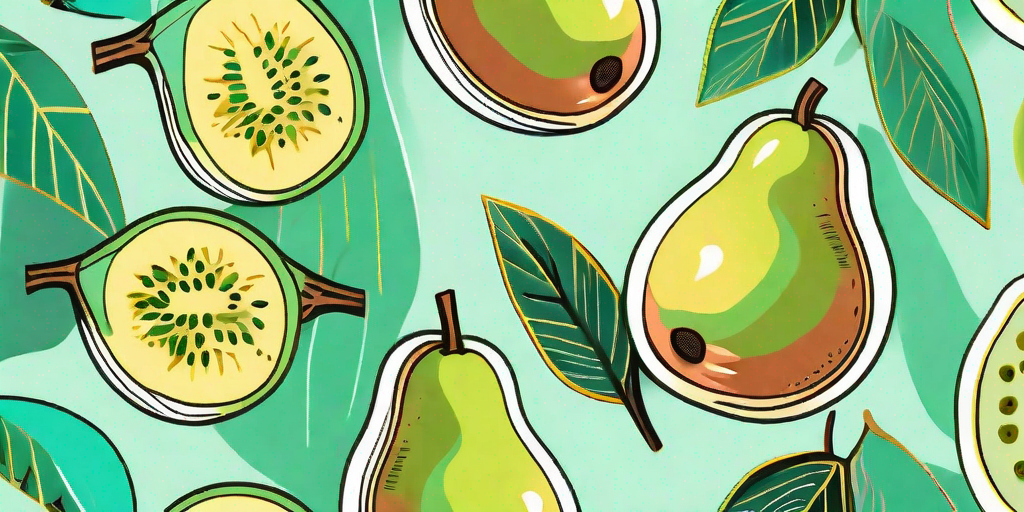
The humble guava, a tropical fruit that's often overlooked in favor of its more glamorous cousins like the mango or the pineapple. But, my dear reader, let me assure you that the guava is a fruit that deserves your attention. Not only is it packed with nutrients, but it also undergoes a fascinating transformation from a hard, green fruit to a soft, golden delicacy. So, buckle up as we embark on a journey from green to golden, exploring the ripening stages of the guava.
The Life Cycle of a Guava
Before we delve into the ripening stages, let's take a moment to appreciate the life cycle of a guava. It all starts with a flower, a pretty little thing that blooms on the guava tree. After pollination, the flower transforms into a tiny, green fruit. This is the beginning of our journey.
As the guava grows, it remains green and hard. This stage is known as the 'immature' stage. The guava is not yet ready for consumption, but it's getting there. Patience, dear reader, is the key to enjoying a ripe, juicy guava.
The Immature Stage
During the immature stage, the guava is hard and its skin is bright green. The fruit is also quite bitter, making it unsuitable for eating. But don't be disheartened. This is just the first stage in the guava's journey to ripeness.
At this stage, the guava is busy absorbing nutrients from the tree and growing in size. So, while it may not be ready for your fruit salad yet, it's getting there. And trust me, the wait will be worth it.
The Mature Stage
As the guava matures, it undergoes a color change. The bright green skin becomes a lighter shade of green. The fruit also becomes slightly softer, but it's still not ready for consumption. This stage is known as the 'mature' stage.
During the mature stage, the guava is full of nutrients. It's also the stage when the guava develops its unique flavor. So, while you can't eat it yet, you can certainly start anticipating the deliciousness that's to come.
The Ripening Stages of a Guava
Now that we've covered the life cycle of a guava, let's delve into the ripening stages. This is where the magic happens, transforming the guava from a hard, green fruit into a soft, golden delight.
The ripening process is a complex one, involving a series of chemical reactions. But don't worry, we won't get into the science of it. Instead, we'll focus on the visible changes that you can observe.
The Pre-Ripening Stage
The pre-ripening stage is a transition period between the mature stage and the ripe stage. During this stage, the guava's skin starts to yellow, and the fruit becomes softer. However, the guava is still not ready for consumption. It's like the fruit is teasing you, hinting at the deliciousness that's to come.
The pre-ripening stage is also when the guava starts to develop its aroma. So, if you have a guava at this stage, take a moment to appreciate its scent. It's a preview of the flavor that's to come.
The Ripe Stage
Finally, we've reached the ripe stage. This is the moment you've been waiting for. The guava's skin is now a golden yellow, and the fruit is soft to the touch. It's also incredibly juicy and packed with flavor. Congratulations, your guava is ready for consumption!
At this stage, the guava is perfect for eating raw. You can also use it in recipes, from smoothies to salads. The possibilities are endless, so feel free to get creative.
FAQs About Guava Ripening
Now that we've covered the ripening stages of a guava, let's address some frequently asked questions. After all, knowledge is power, especially when it comes to fruit ripening.
How Long Does It Take for a Guava to Ripen?
The ripening process varies depending on the variety of guava and the conditions in which it's grown. However, on average, it takes about 90 to 150 days for a guava to ripen after the flower is pollinated.
Can I Speed Up the Ripening Process?
Yes, you can speed up the ripening process by placing the guava in a paper bag with a banana or an apple. These fruits release a gas called ethylene, which accelerates ripening.
How Can I Tell If a Guava Is Overripe?
An overripe guava will have a very soft texture and may have brown spots on the skin. It may also have a fermented smell. While you can still eat an overripe guava, it may not taste as good as a perfectly ripe one.
Fun Facts About Guavas
Before we wrap up, let's explore some fun facts about guavas. After all, who doesn't love a good trivia?
- Guavas are rich in vitamin C. In fact, a single guava contains four times the amount of vitamin C found in an orange.
- There are over 150 varieties of guava, each with its own unique flavor and texture.
- Guavas are native to Central and South America, but they are now grown in many tropical and subtropical regions around the world.
- The guava tree is a member of the myrtle family, which also includes other popular fruits like the feijoa and the acca.
So, there you have it, a comprehensive guide to the ripening stages of a guava. From green to golden, the journey of a guava is a fascinating one. So, the next time you see a guava, take a moment to appreciate its journey. And remember, patience is key when it comes to enjoying a ripe, juicy guava.











